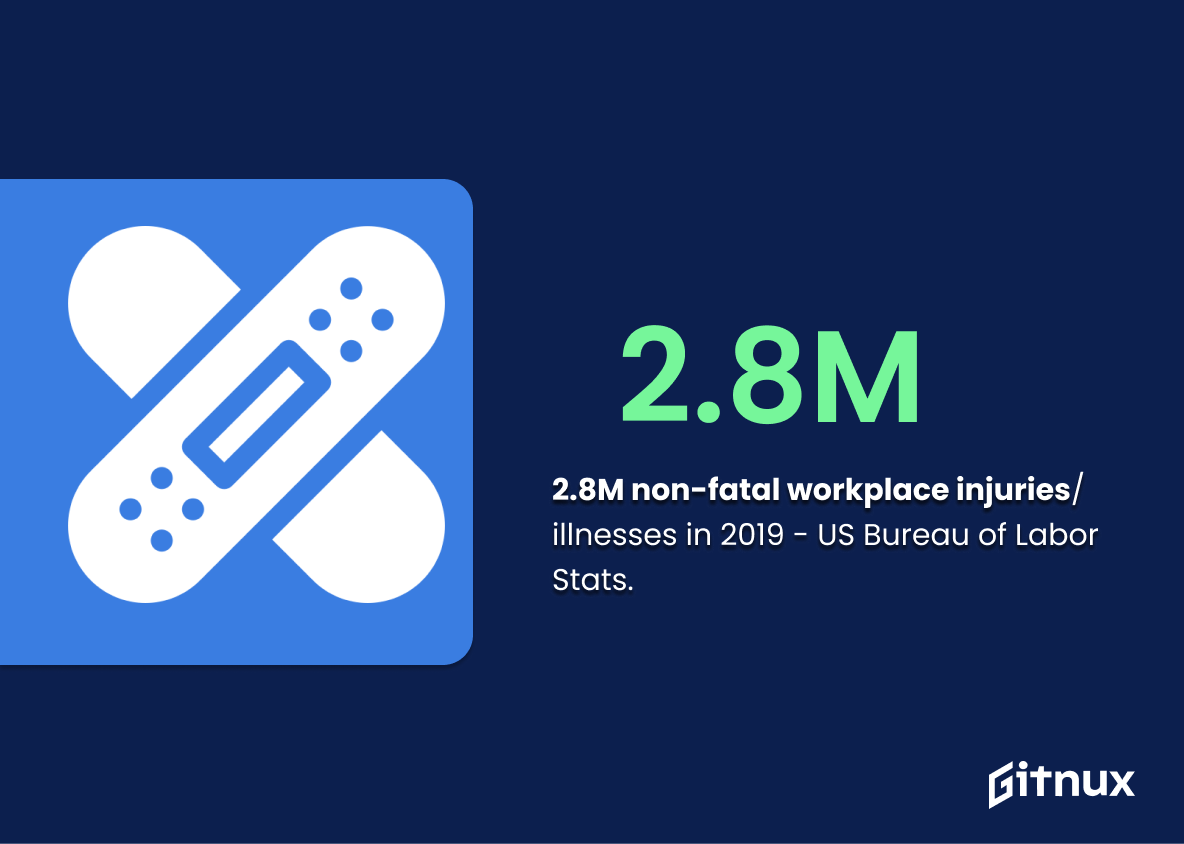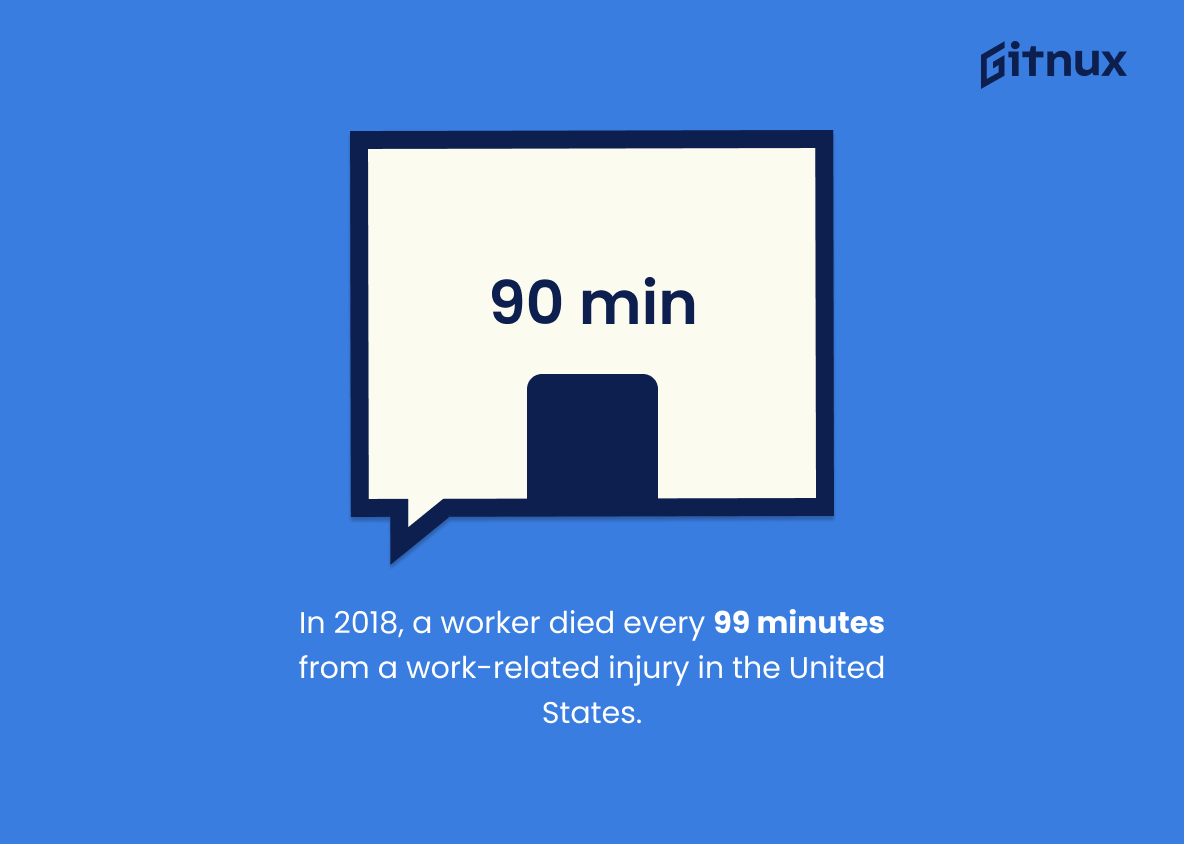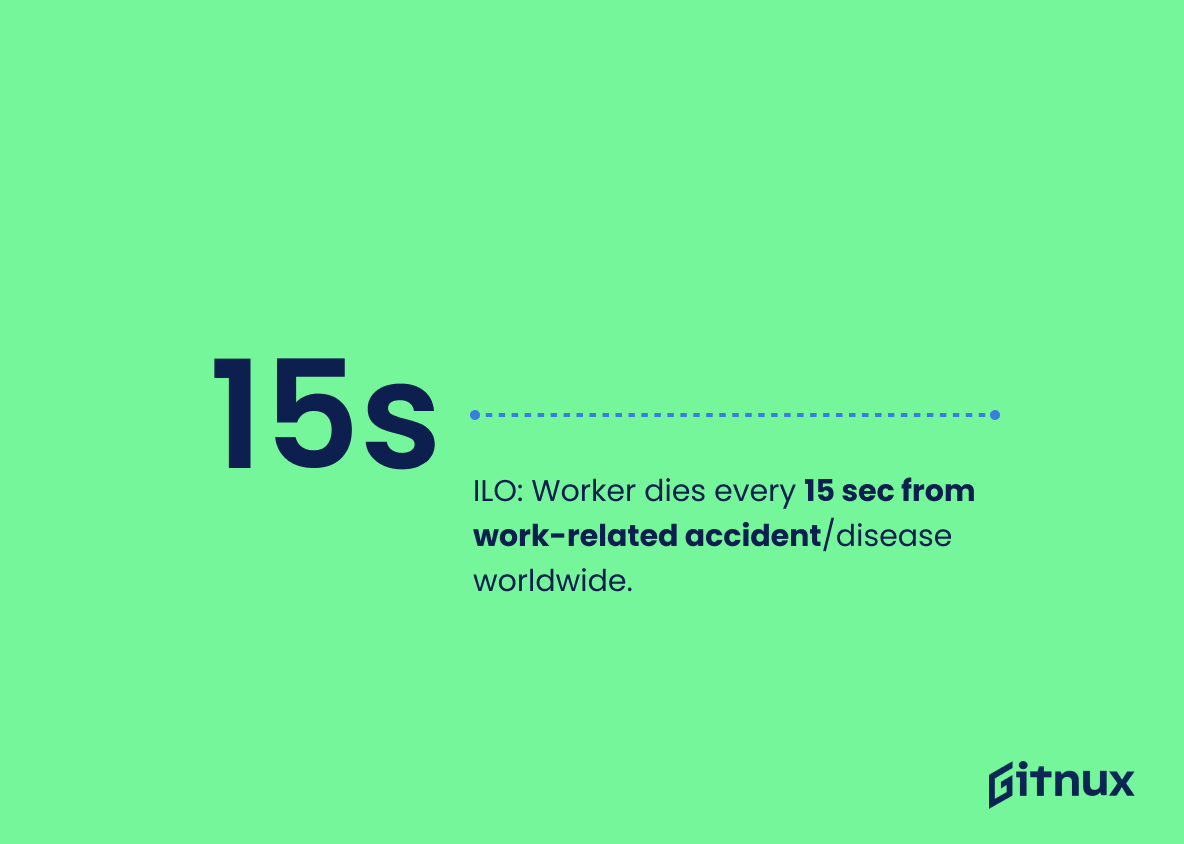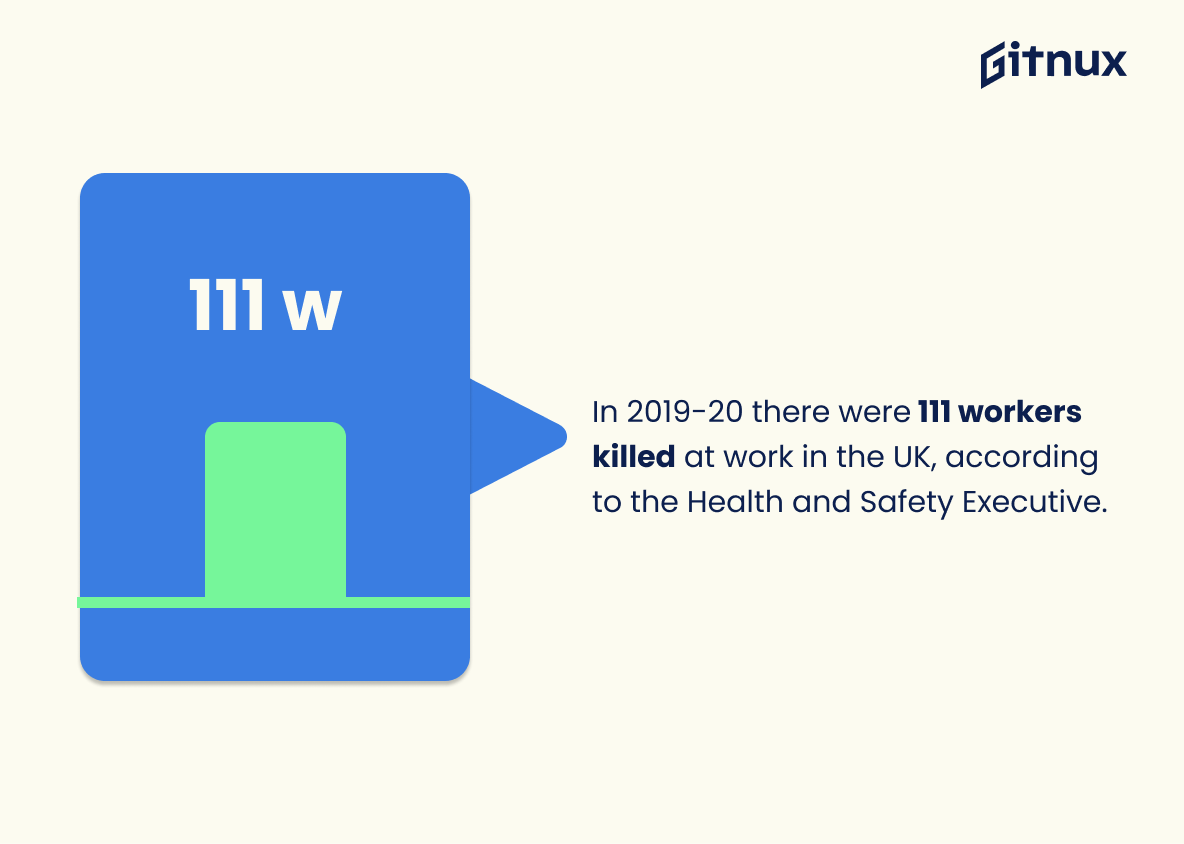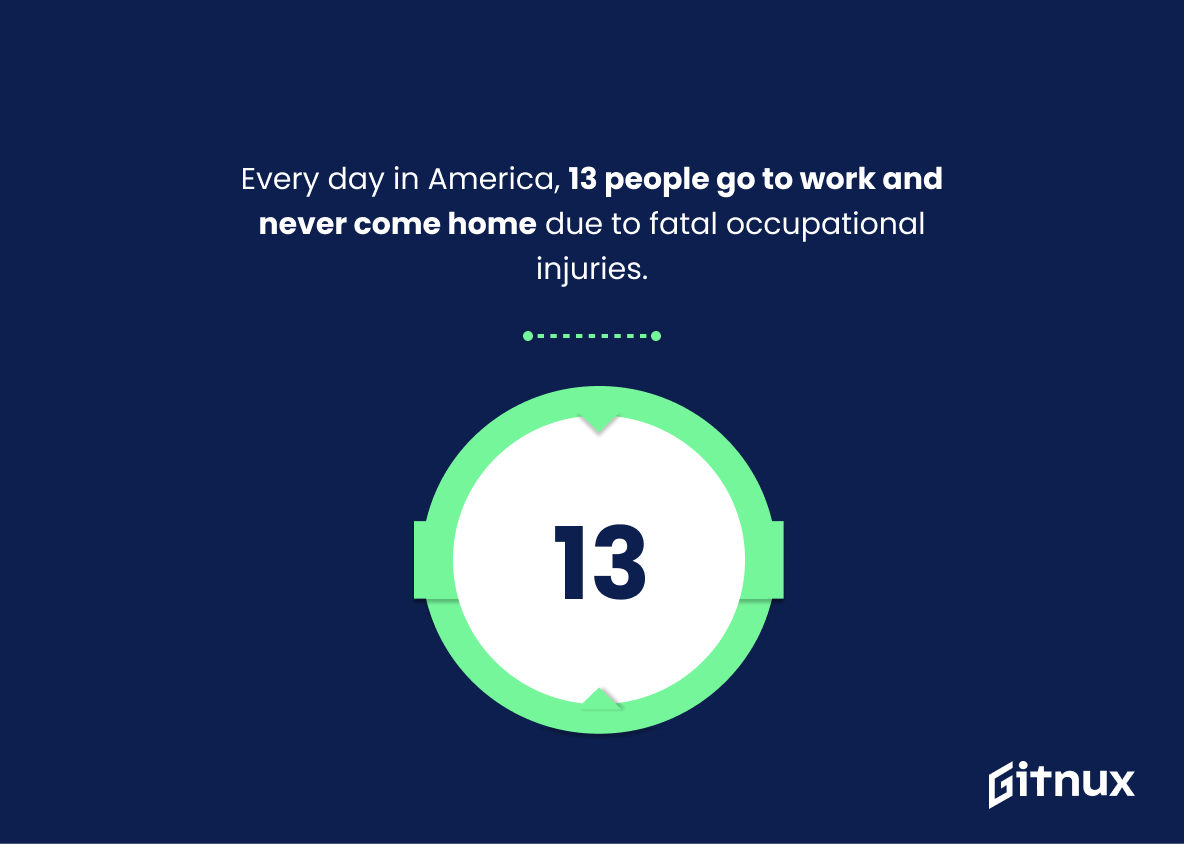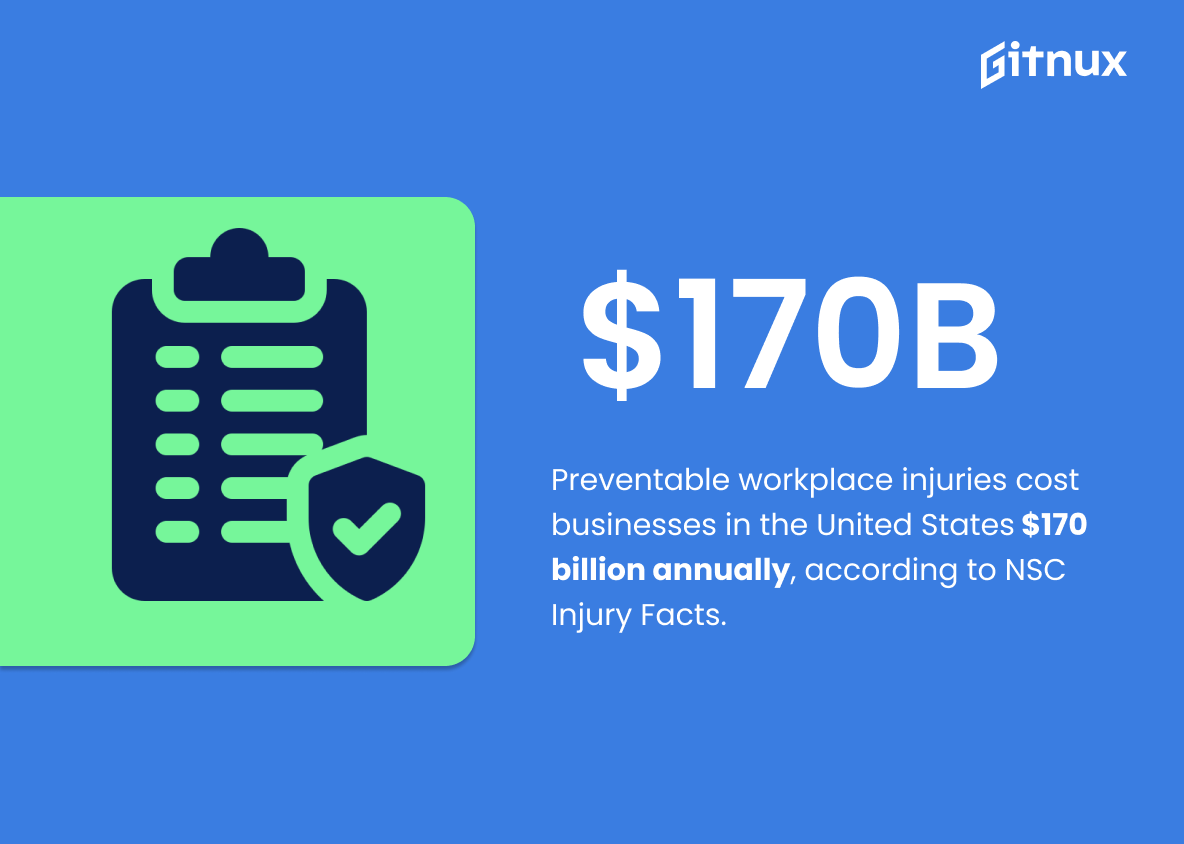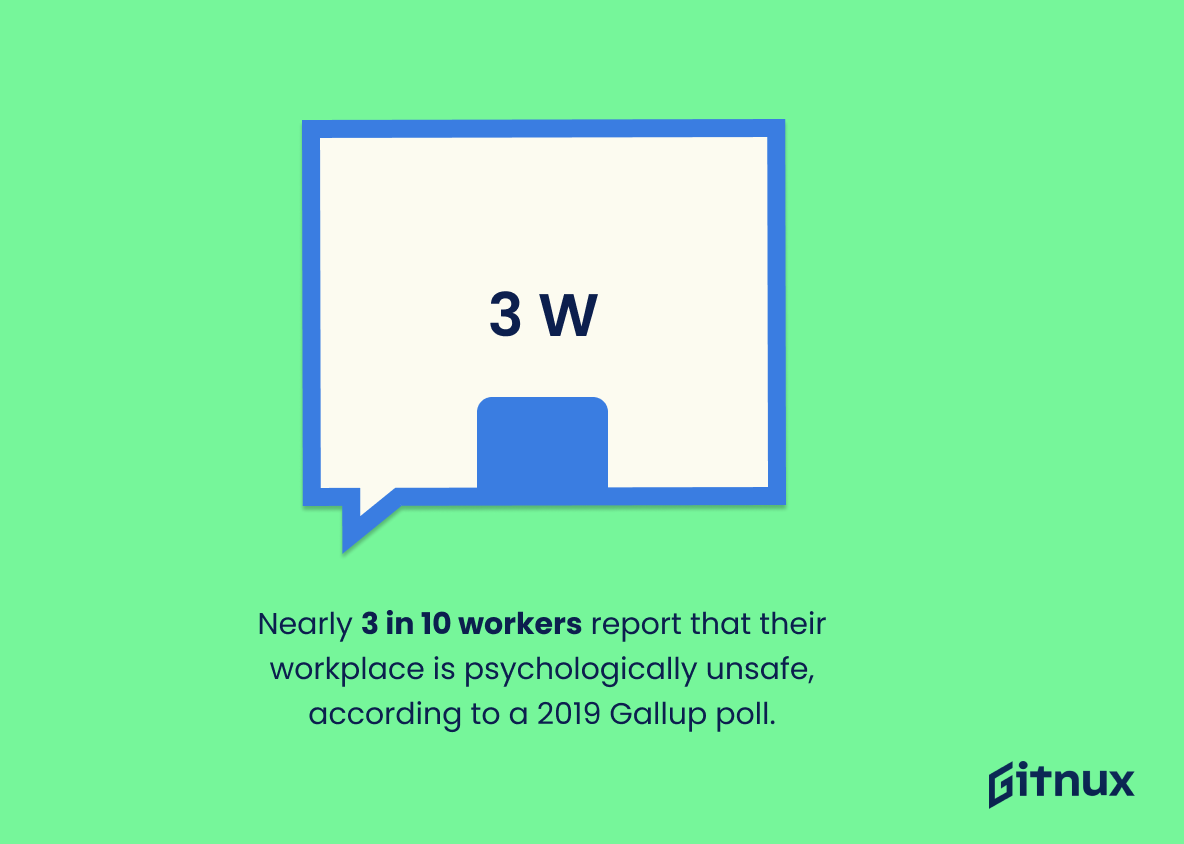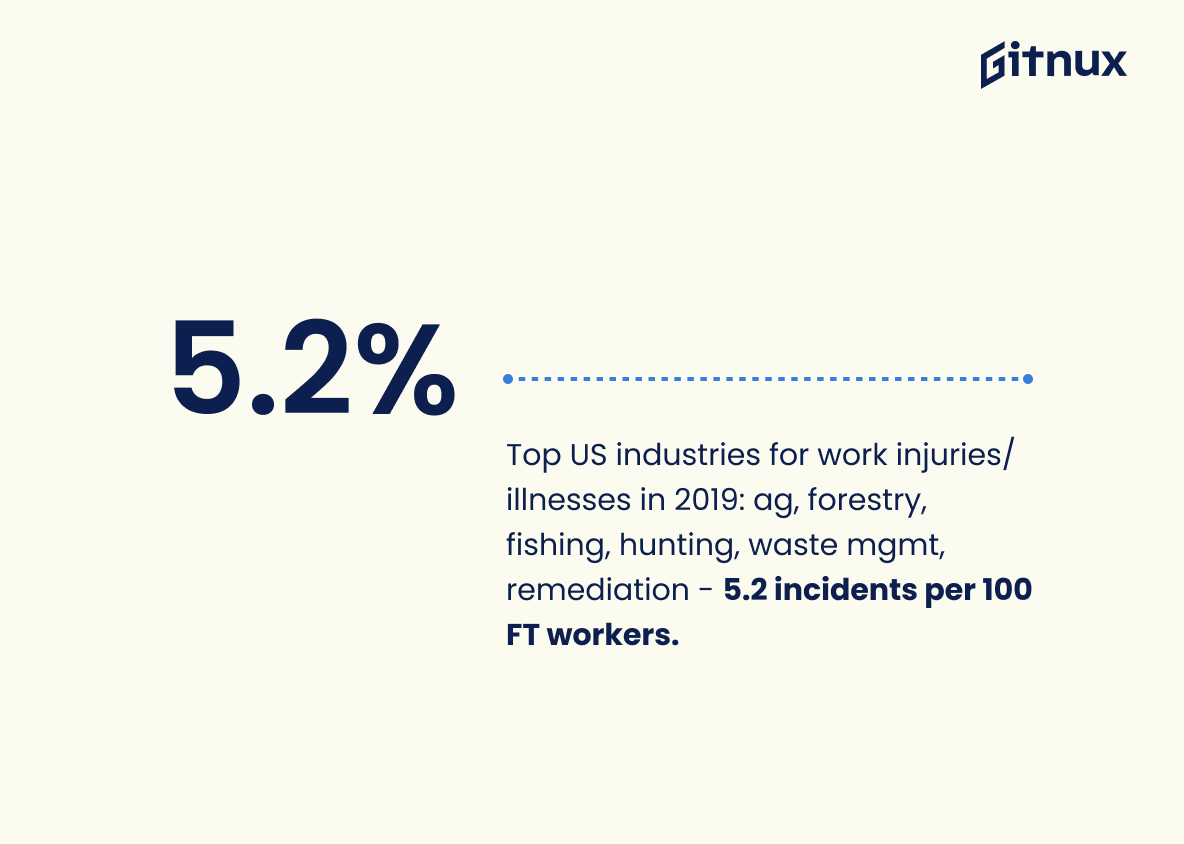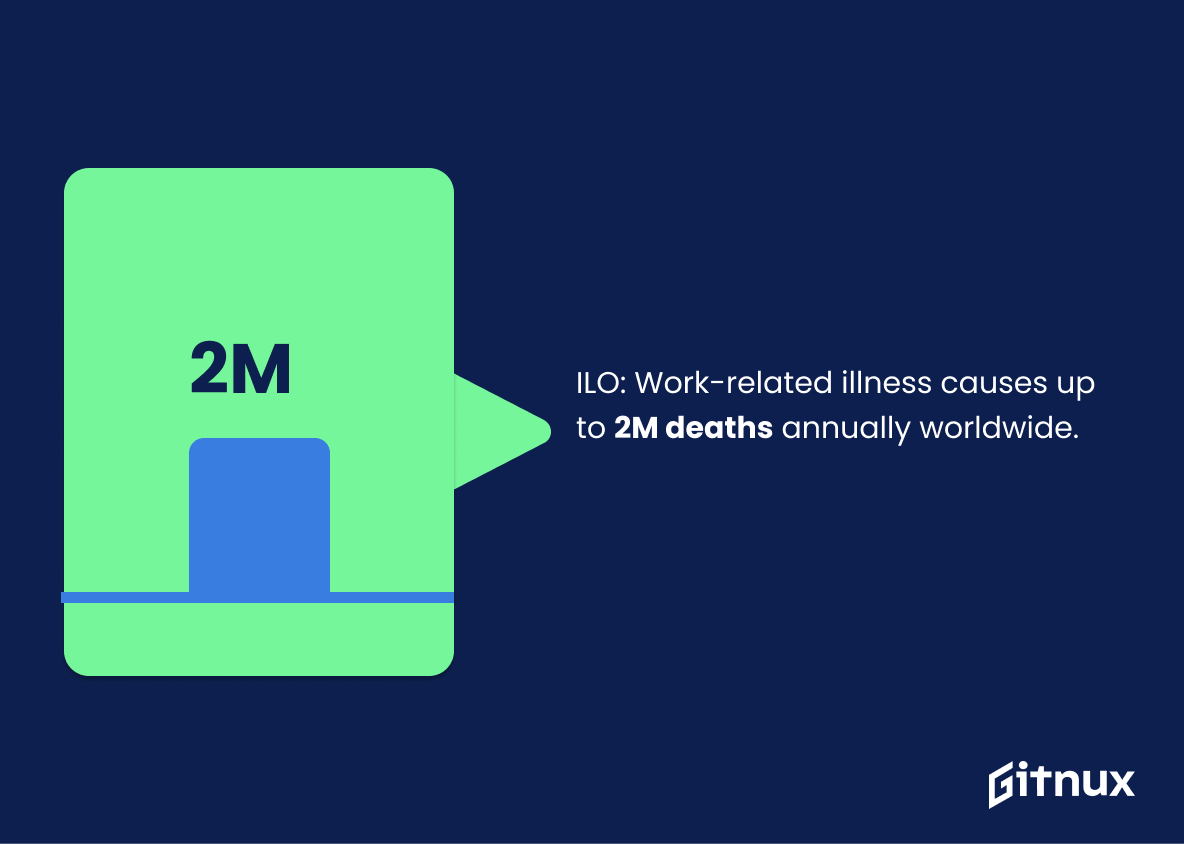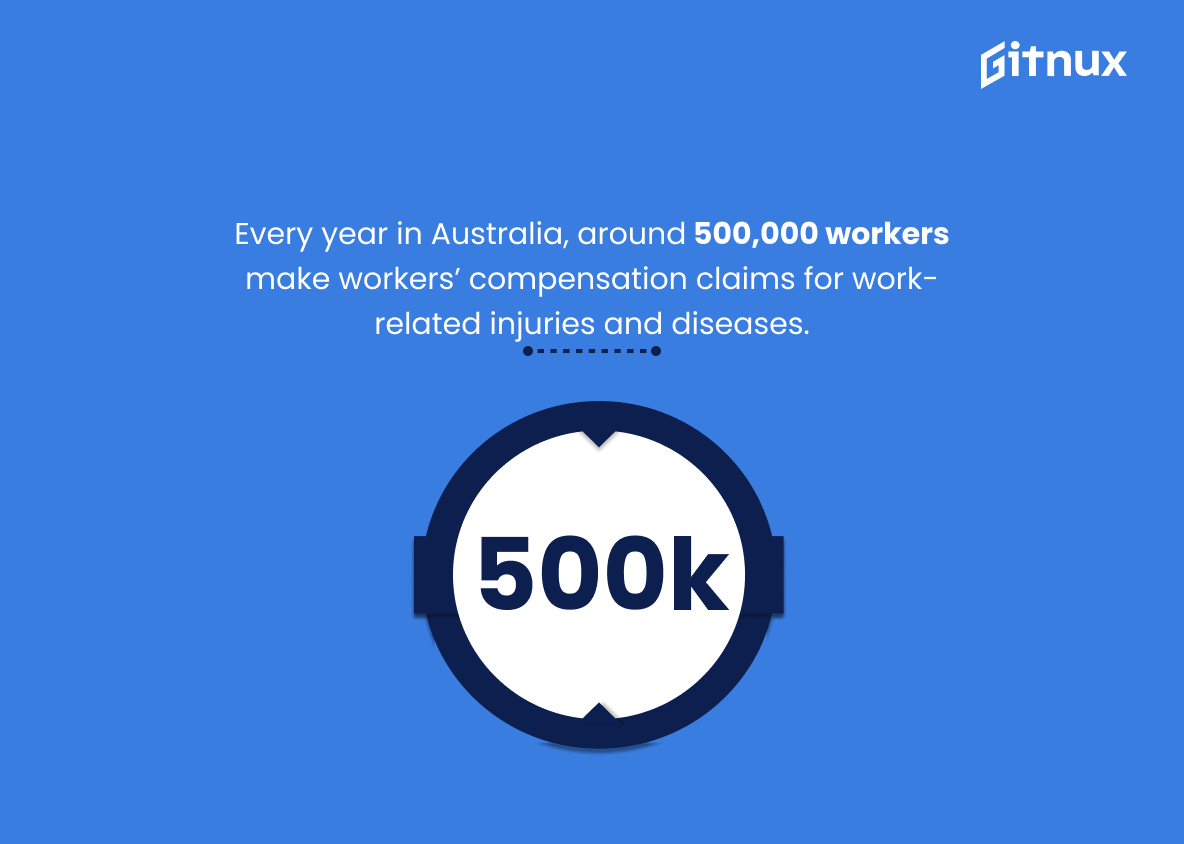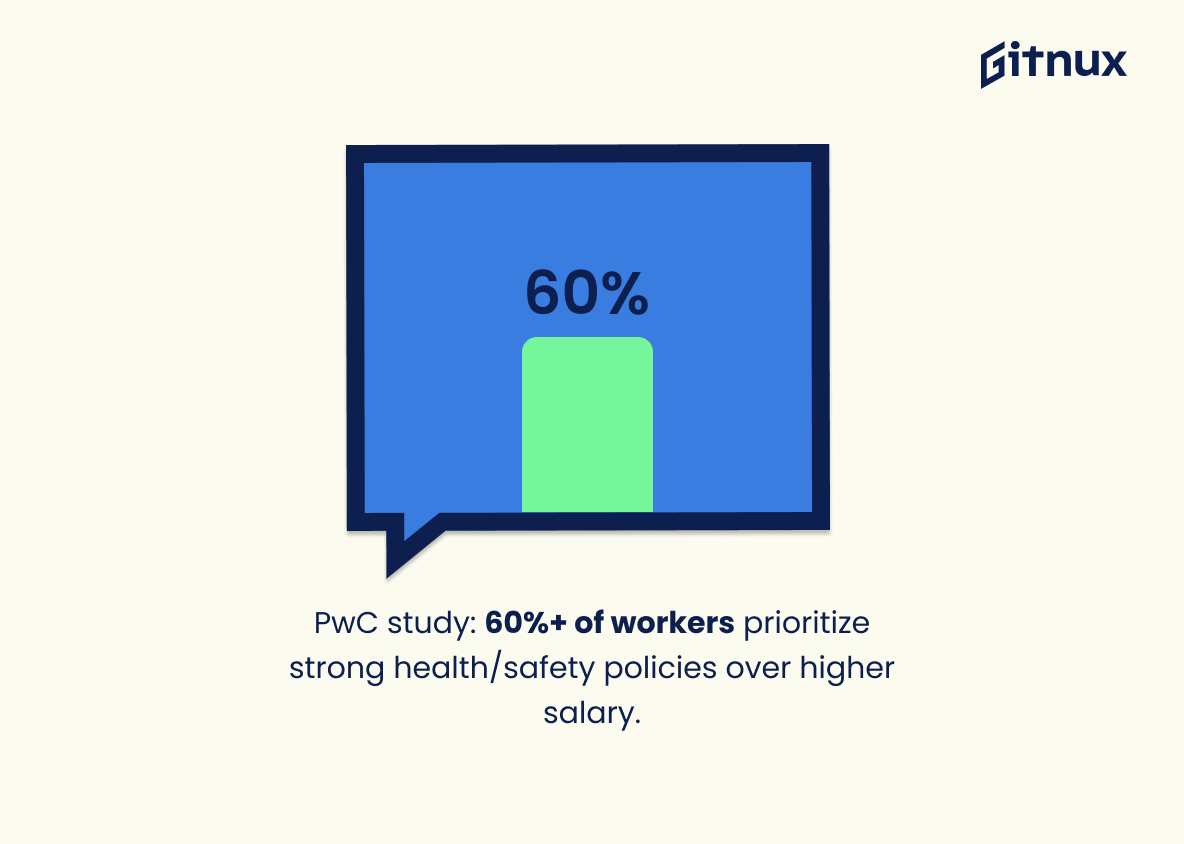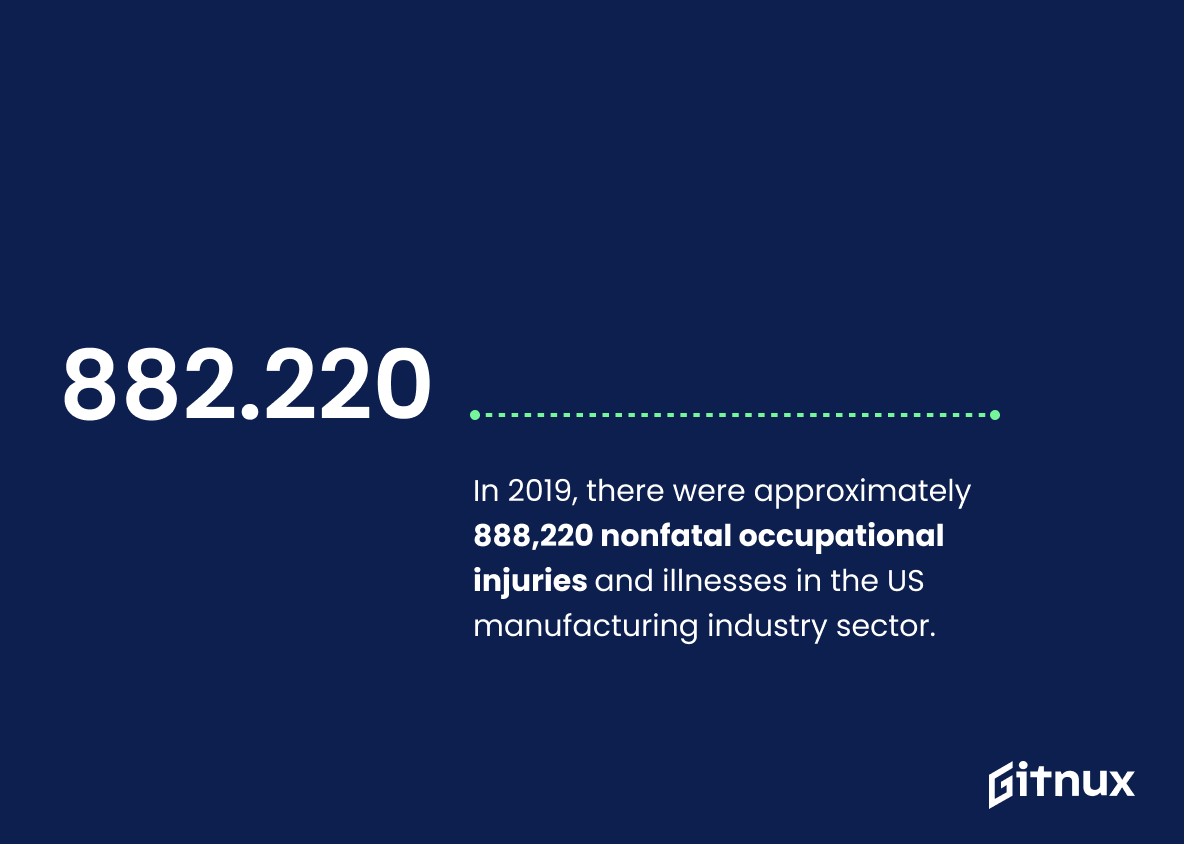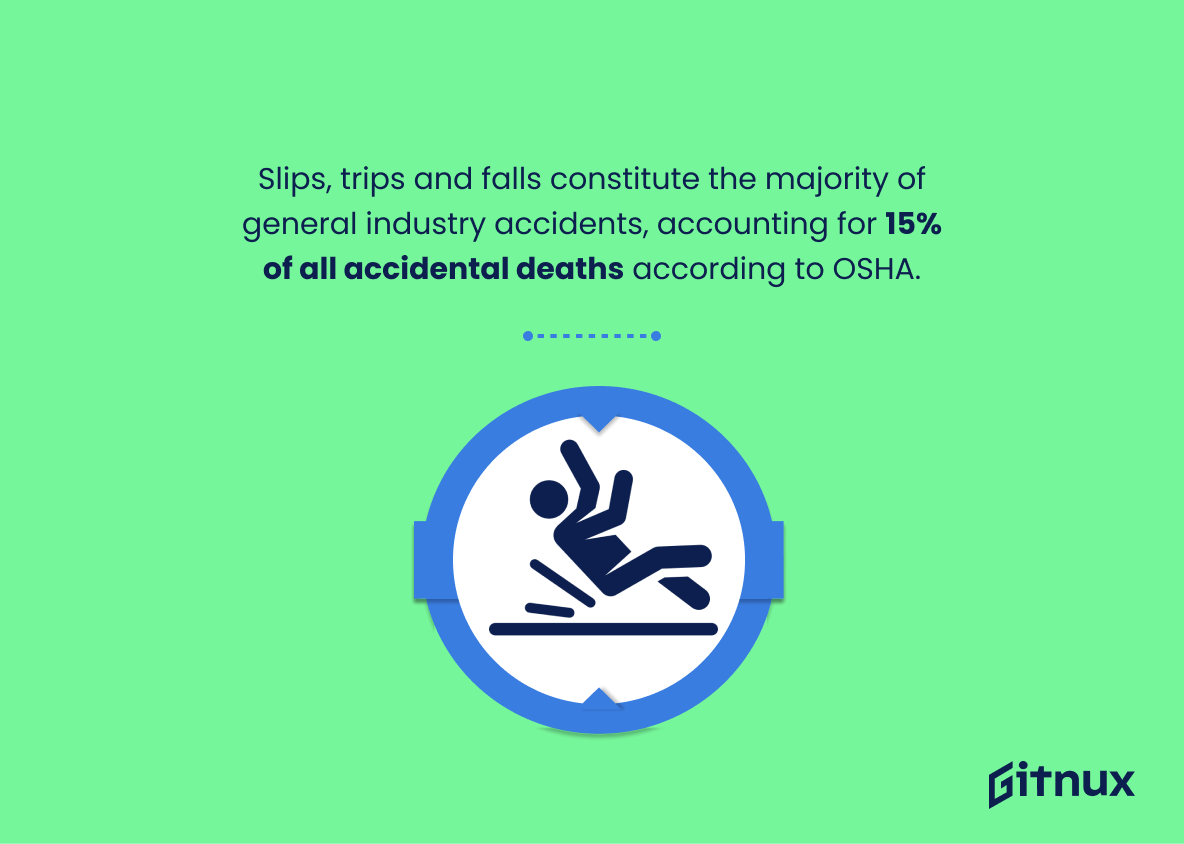Understanding the importance of workplace safety is undebatable, but often, comprehending the real-life implications can be better grasped through cold, hard statistics. Today, we delve deep into the unfamiliar terrain of workplace safety statistics, clearing the fog and showcasing just how important safety measures within the work environment are. This article is more than just numbers on a page – it’s a hard-hitting realization of the risks present in our everyday work-life and the need to counter them effectively. So buckle up, as we navigate the eye-opening world of Workplace Safety Statistics, providing a clear portrait of why maintaining a safe space to work is more than just a moral obligation; it’s a save-your-life necessity.
The Latest Workplace Safety Statistics Unveiled
Non-fatal workplace injuries and illnesses among private industry employers in 2019 stood at 2.8 million cases as reported by the US Bureau of Labor Statistics.
Highlighting this noteworthy data from the US Bureau of Labor Statistics plants a flag in the terrain of workplace safety debates. The staggering figure of 2.8 million non-fatal workplace injuries and illnesses among private industry employers spotlight the urgency and importance of effective safety protocols in 2019. Embedded in this statistic is a strong call to arms to tackle head-on the astonishingly high rate of mishaps in work environments. Data such as this accentuates the thrust of any discourse on Workplace Safety Statistics, underlining the relevant issues with bold inks of authenticity and authority.
In 2018, a worker died every 99 minutes from a work-related injury in the United States.
Examining the grim detail that in 2018, a worker’s life was stolen every 99 minutes due to a work-related injury in the United States immediately thrusts us into the chilling reality of workplace dangers. Undeniably, this revelation serves as a stark reminder of the urgency and significance of maintaining safety in our work environment. By demonstrating the frequency of such tragic events, we are awakened to the harsh consequences of inadequate safety measures, driving the need for continuous improvements and regulations to secure the wellness and survival of workers. This statistic is a powerful call to action, urging us to prioritize and advocate for workplace safety.
The International Labour Organization states that every 15 seconds, a worker dies from a work-related accident or disease globally.
Highlighting the grim reality of ‘a worker losing their life every 15 seconds due to work-related accidents or diseases’, as put forth by the International Labour Organization, forms the crux in any discourse around Workplace Safety Statistics. This chilling revelation serves as a compelling clarion call, underscoring the imperativeness of implementing robust safety measures and stringent regulations at workplaces globally. Moreover, it highlights the potential cost of negligence—human lives—pushing us to reevaluate and continuously improve safety standards. This harrowing statistic brings attention to the urgency of the matter, putting the spotlight on the horrifying human toll of workplace hazards, far beyond just monetary losses or productivity dips.
In 2019-20 there were 111 workers killed at work in the UK, according to the Health and Safety Executive.
The glaring spotlight falls on this chilling statistic – 111 workers tragically lost their lives in workplace incidents throughout the UK during 2019-20, a grim revelation from the Health and Safety Executive. In the grand narrative of Workplace Safety Statistics, this stark truth underscores a profound urgency. It stands as a silent, yet deafening, battle cry for escalating the efforts in improving safety measures, strategies and protocols in our work environments. It serves as a foreboding reminder that it is not just a race for productivity or a battle for bottom lines but essentially about preserving the most significant resource – human lives.
Every day in America, 13 people go to work and never come home due to fatal occupational injuries.
Consider the chilling image, thirteen dinner tables across America every night with an empty seat. These absent dinner guests are the workers who left for their jobs in the morning, yet devastatingly, never returned due to fatal occupational injuries. This statistic serves a stark reminder underscoring the importance of our discussion on workplace safety. It’s not just a number, but human lives, families enduring unthinkable loss, communities shattered. As we delve into workplace safety statistics, let this figure be a silent drumbeat in our minds, a call to action for better safety measures, stricter regulations and a commitment to prioritize employee well-being above all. Let the gravity of these thirteen lives lost each day fuel our dialogue and urge us to strive for a world where work doesn’t end in tragedy.
Preventable workplace injuries cost businesses in the United States $170 billion annually, according to NSC Injury Facts.
Highlighting the overwhelming $170 billion annual toll on businesses due to preventable workplace injuries fundamentally underscores the magnitude and urgency of prioritizing workplace safety. This staggering figure, as provided by the NSC Injury Facts, not only testifies to the financial burden borne by businesses but also serves as a compelling call-to-action to enhance safety measures. In the grand scheme of workplace safety statistics, this pivotal data point anchors the discussion around cost-effective prevention strategies and their role in safeguarding both employee wellbeing and companies’ financial health.
Nearly 3 in 10 workers report that their workplace is psychologically unsafe, according to a 2019 Gallup poll.
Delving into the heart of the matter, this grim statistic brings to light the vast proportion of workers grappling with psychological insecurity in their working environments. A disturbing 30% workforce, based on the 2019 Gallup poll, wrestles with negative emotions, lack of trust, and potentially damaging stressors embedded within their workplace culture. This is not only a crucial call out for businesses to prioritize mental health, but also resonates sharply with controversies surrounding organizational culture, leadership, and overall employee wellbeing. Hence, it becomes an essential cornerstone to shape discussions on workplace safety strategies, echoing the undeniable need to broaden the perspectives beyond physical safety and shine a spotlight onto the intricate dimensions of psychological safety.
In 2019, industries most affected by work-related injuries and illnesses were agriculture, forestry, fishing, hunting, waste management, and remediation services, with an incidence rate of 5.2 incidents per 100 full-time workers in the US.
Highlighting this statistic in a discussion about Workplace Safety Statistics is crucial because it serves as a powerful indicator, shedding light on the sectors prone to higher rates of work-related injuries and illnesses. By focusing on the rate of 5.2 incidents per 100 full-time workers within 2019, we make plain the adversity faced by workers in agriculture, forestry, fishing, hunting, waste management, and remediation services. This, in turn, underscores the imperative need for proactively improving safety standards in these high-risk industries. Evidently, the statistic lends weight to the call for action and can mobilize necessary reform while simultaneously marking a benchmark for measuring future improvements in workplace safety.
The International Labour Organization estimates that globally, work-related illness results in up to 2 million deaths per year.
In the wide universe of Workplace Safety Statistics, we find a galactic tenet influencing our perception and response, traced back to an estimate by the International Labour Organization. It brings to light the dire consequence of up to 2 million deaths annually, a corollary to work-related illnesses on a global scale. This figure not merely represents a numeric value, but echoes the alarm bell for reinforcing workplace protocols and health measures. Each digit in this startling figure paints a story of a silent but potent killer lurking in our workplaces, underscoring the imperative urgency of workplace safety. It’s not just about ticking boxes for regulation requirements or going through superficial demonstrations. This shocking revelation necessitates a serious rethink of our safety measures, a safety revolution if you would, in workplaces around the globe.
Every year in Australia, around 500,000 workers make workers’ compensation claims for work-related injuries and diseases.
“Picturing half a million workers across Australia being compelled to submit compensation claims due to work-related injuries and diseases every year helps illuminate the urgency of improving workplace safety. Various circumstances give rise to an environment where employees are exposed to unnecessary risks and hazards. By scrutinizing this startling stat, we stir thought-provoking conversations around the need for corrective measures and responsible practices. Such dialogues ultimately aid in shaping safer work environments, thereby making our examination of this numeric revelation much more than just a numerical exploration. So, this statistic is a call to action, a catalyst prompting us all to reevaluate and strengthen safety measures in professional-settings across Australia.”
In 2017, approximately 2.78 million non-fatal injuries and illnesses were reported among private industry employees in Japan.
The striking revelation that nearly 2.78 million non-fatal injuries and incidents of health issues were reported among Japanese private sector workers in 2017 serves as a compelling wakeup call. Highlighting the raw reality of workplace hazards, this piece of data underscores the crucial importance of instilling sound safety protocols and implementing regular, quality training for employees. Its inclusion in a post about Workplace Safety Statistics is far from arbitrary. Indeed, it serves as a powerful testament to the reality that workplace safety is a pressing issue that demands the attention of employers, policy makers, and society at large. The sheer enormity of this figure serves as a clear beacon, guiding our focus towards the urgent need for more effective, comprehensive strategies pertaining to workplace safety.
Over 60% of employees would prefer a workplace with strong health and safety policies, even if it means accepting a lower salary, according to a study from PwC.
Highlighting this remarkable PwC study discovery puts into perspective the importance employees place on their safety and wellbeing at the office. It showcases that a vast majority, over 60% in particular, would willingly forego a part of their compensation for a work environment that prioritizes their safety. It underlines the fundamental fact that health and safety measures are not just legal obligations or mere checkboxes to tick. Rather, they serve as instrumental components in fostering job satisfaction, employee retention, and overall workplace productivity. Therefore, organizations that seek to attract and retain top talent must not undervalue the power of strong health and safety policies.
In 2019, there were approximately 888,220 nonfatal occupational injuries and illnesses in the US manufacturing industry sector.
Examining the sheer figure of approximately 888,220 nonfatal occupational injuries and illnesses in the US manufacturing industry in 2019 gives us a sobering reality check on the current state of workplace safety measures. This number is a vital indicator of the significant risks that employees face daily in this sector. In the discourse of a blog post about Workplace Safety Statistics, it’s a wake-up call that instigates discussions on the need for stricter safety regulations, more comprehensive workforce training, and investment in safer equipment. Furthermore, this statistic underscores the urgency for continuous emphasis on improved working conditions, as it provides a quantifiable measure of the human cost associated with lapses in workplace safety.
On a global scale, the lack of adequate occupational safety and health is estimated to cost about 4% of the global Gross Domestic Product (GDP) each year, according to the International Labour Organization.
This intriguing piece of data paints a startling picture of the huge economic impact of inadequate occupational safety and health measures globally. Imagine, nearly 4% of the global GDP annually ebbs away due to this issue, as reported by the International Labour Organization. We’re not merely speaking of human resources impacted or the physical toll on our workers but a financial fallout that affects our global economy. It is a stark reminder that careful consideration and burgeoning efforts in promoting workplace safety measures is a worthwhile investment. It not just safeguards worker welfare but also acts as an economic stabilizer, saving billions which can then be repurposed towards growth and development initiatives. This in essence explains why a focus on improving occupational safety and health is a simultaneous bolstering of our global economy.
Slips, trips and falls constitute the majority of general industry accidents, accounting for 15% of all accidental deaths according to OSHA.
Highlighting the alarming fact that slips, trips, and falls account for 15% of all accidental deaths serves as a wake-up call in a blog post about Workplace Safety Statistics. This striking percentile acts as a clear and present reminder of the importance of preventive measures within the workplace. Moreover, it sheds light on the reality that even seemingly minor mishaps, like slips or trips, can have fatal outcomes. By including this critical statistic, we underline the urgency for better safety protocols and improved workplace environments. So, perceive this not just as a mere statistic, but as a crucial indicator prompting immediate action towards a safer workspace.
Conclusion
Understanding and integrating workplace safety statistics is crucial for any organization wishing to foster a safe and productive working environment. Companies must stay updated with these figures, adapt their safety measures accordingly, and educate their employees about the importance of these statistics. By prioritizing safety, businesses can significantly reduce the likelihood of untoward incidents, increase employee satisfaction, and boost overall productivity. Always remember, a safe workplace is more than a right, it is an absolute necessity.
References
0. – https://www.www.hse.gov.uk
1. – https://www.www.nsc.org
2. – https://www.www.ilo.org
3. – https://www.www.bls.gov
4. – https://www.www.safeworkaustralia.gov.au
5. – https://www.www.gallup.com
6. – https://www.www.osha.gov
7. – https://www.stats.oecd.org
8. – https://www.www.pwc.com
9. – https://www.www.cdc.gov
